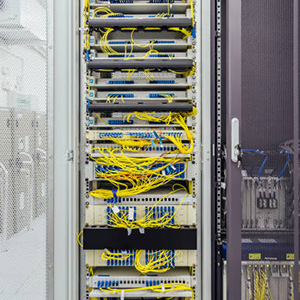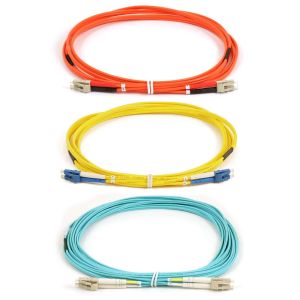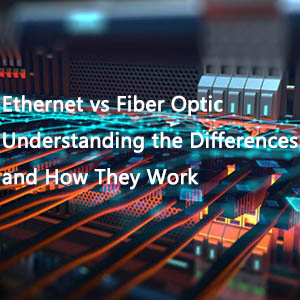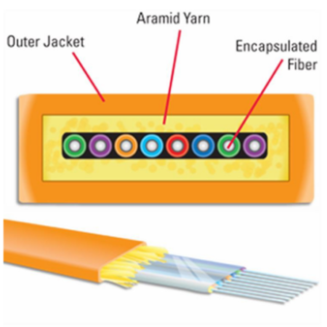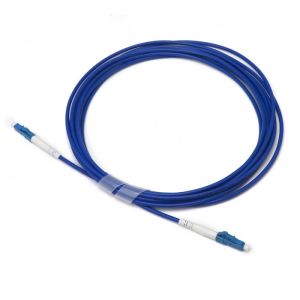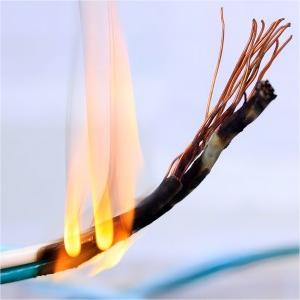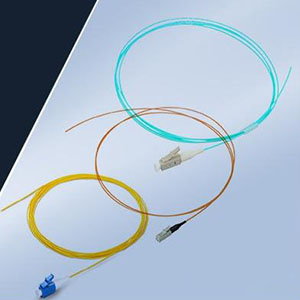In today’s era of rapid development of information technology, optical fiber communication technology has become an indispensable part of connecting the world with its advantages of high speed and large capacity. In particular, single-mode optical fiber has attracted much attention due to its unique characteristics and wide range of application scenarios. So, what are the classifications, advantages and disadvantages of single-mode optical fiber, and what are its application scenarios? Let’s explore this topic full of science and technology together.
What Is Single Mode Fiber?
In optical fiber technology, single mode fiber (SMF) or monomode fiber, is an optical fiber that is designed for the transmission of a single ray or mode of light as a carrier to propagate at a time. Generally, single mode cable has a narrow core diameter of 8 to 10µm (micrometers), which can propagate at the wavelength of 1310nm and 1550nm. In a single-mode fiber, all signals travel straight down the middle without bouncing off the edges (blue line in the following diagram), eliminating any distortion that could result from overlapping light pulses. Signals such as Cable TV, Internet, and telephone are generally carried by single mode fibers, which are wrapped together into a huge bundle. The single mode optical fiber is the best choice for transmitting data over long distances such as 100 km (60 miles) for its low signal attenuation caused by the single light mode.

Single Mode Fiber Types: OS1 vs OS2
As we all know, multimode fiber is usually divided into OM1, OM2, OM3, OM4 and OM5 fiber types. When it comes to single mode fiber types, it can be categorized into OS1 and OS2 fiber, which are SMF fiber specifications. OS1 and OS2 are standard single mode optical cables respectively used with wavelengths of 1310nm and 1550nm with a maximum attenuation of 1 dB/km and 0.4 dB/km. OS1 fiber is a tight buffered cable designed for use in indoor applications (such as campuses or data centers) where the maximum distance is 10 km. OS2 fiber is a loose tube cable designed for use in outdoor cases (like street, underground and burial) where the maximum distance is up to 200 km. Both OS1 and OS2 fiber optic cable support Gigabit and 10G Ethernet links. Besides, OS2 fiber can support 40G and 100G Ethernet links. For more details, refer to the OS1 vs OS2 Comparison.
What Are the Advantages and Disadvantages of Single Mode Fiber?
Normally, the advantages and disadvantages of single mode fibers are relative concepts and are commonly compared to multimode fibers.
Advantages of Single Mode Fiber
- Single mode fiber distance: single mode fiber supports a greater distance than multimode fiber because of its lower attenuation. For example, multimode fiber generally has a reach of several hundred meters, whereas SM fiber has the potential to reach 200 km.
- Bandwidth capacity: A single mode optical fiber cable offers a higher bandwidth than a multimode fiber optic cable.
- Data dispersion: single mode fiber only transmits light of one mode, causing no modal dispersion.
- Single mode fiber speed: Single mode fiber doesn’t have modal dispersion, modal noise, and other effects that come with multimode transmission. So it can carry signals at much higher speeds and up to 50 times more distance than multimode fiber.
Disadvantages of Single Mode Fiber
- Requires much tighter tolerances: it is difficult to couple light into a single mode fiber than into a multimode fiber because of the smaller fiber core diameter inside the SMF. The smaller cores (8-10 µm) require much tighter tolerances than coupling light into the larger cores (62.5/50 µm) of multimode fibers.
- Costs more: single mode fiber components and equipment are more expensive than that of multimode fiber. Multimode fiber can support multiple light modes, its price is higher than single mode fiber. However, on the device side, single mode fiber devices are more expensive than multimode fiber devices because single mode fiber typically uses solid-state laser diodes.
- Stricter technology: it is more difficult to manufacture and handle SMFs than MMFs.
Applications of Single Mode Fiber Optic Cables
Single mode fiber applications could be divided into four main situations listed below according to different categories.
| Categories | Application Scenarios |
|---|---|
| Traditional/standard single mode fiber | Metropolitan and access networks |
| Negative non-zero dispersion shifted fiber | Metropolitan and medium distance networks |
| Positive non-zero dispersion shifted fiber | Long-haul and high-data-rate metropolitan networks |
| High positive non-zero dispersion shifted fiber | High-speed, high-capacity, unrepeatered submarine networks |
In addition, single mode fiber has a wide range of application in fiber optic components or equipment making such as single mode fiber optic adapter, fiber optic attenuator, pigtail and patch cords. For example, the indoor single mode fiber cable can be produced as fiber pigtails or patch cords to connect with fiber optic equipment of single mode type.
Summary
Therefore, in the process of network construction, the use of single-mode fiber is crucial and efficient. It is widely regarded as the best solution to the problem of long-distance modal dispersion. Therefore, in the design of backbone systems, the use of single-mode fiber has become a common practice.

